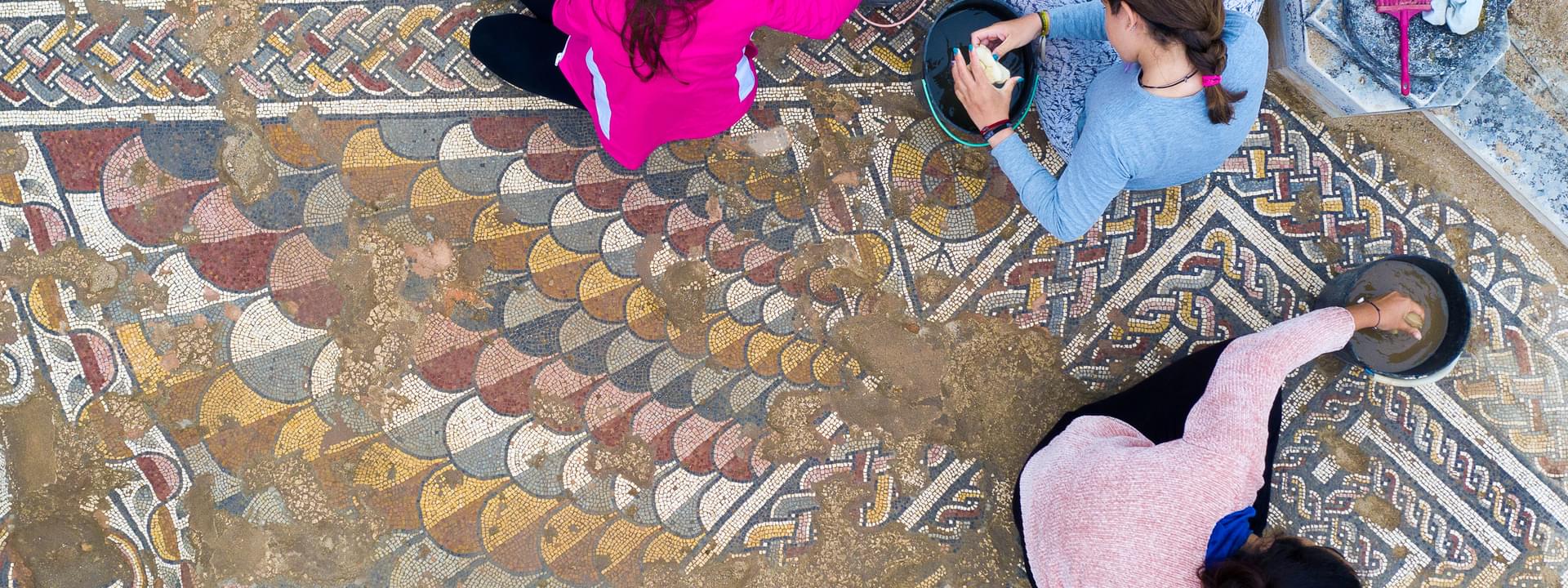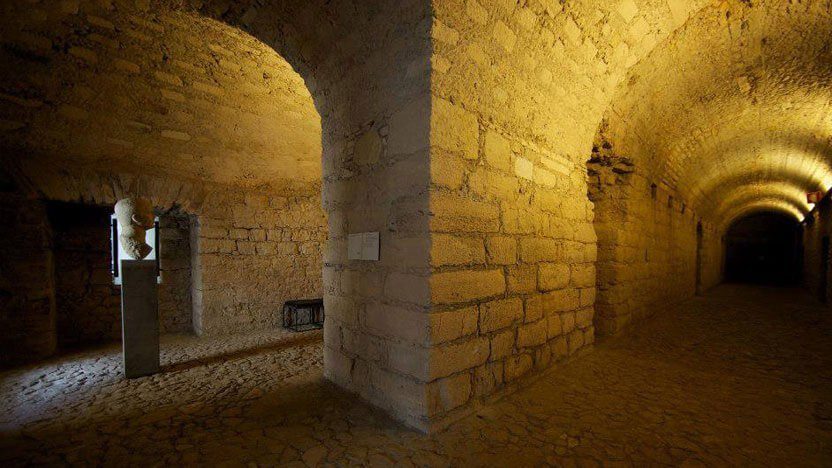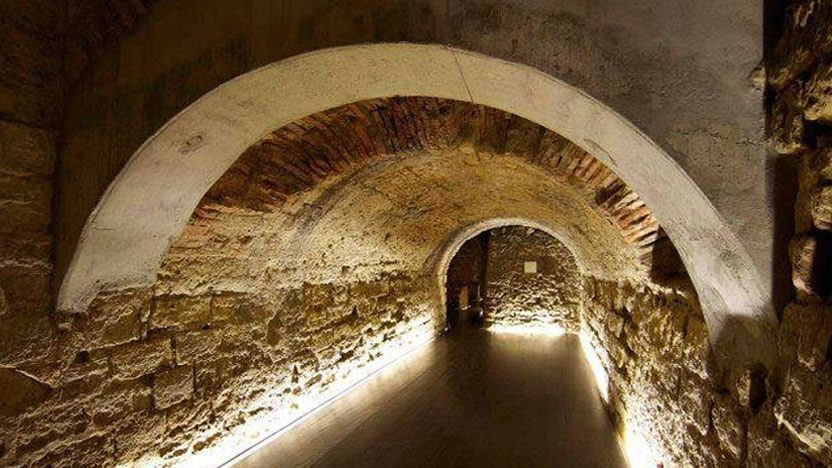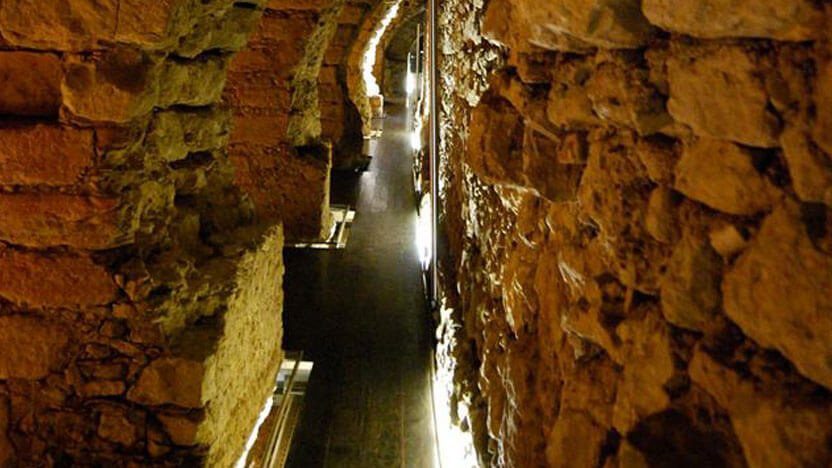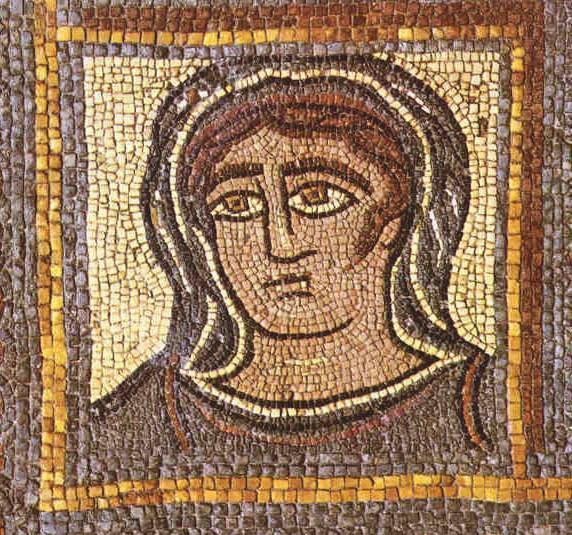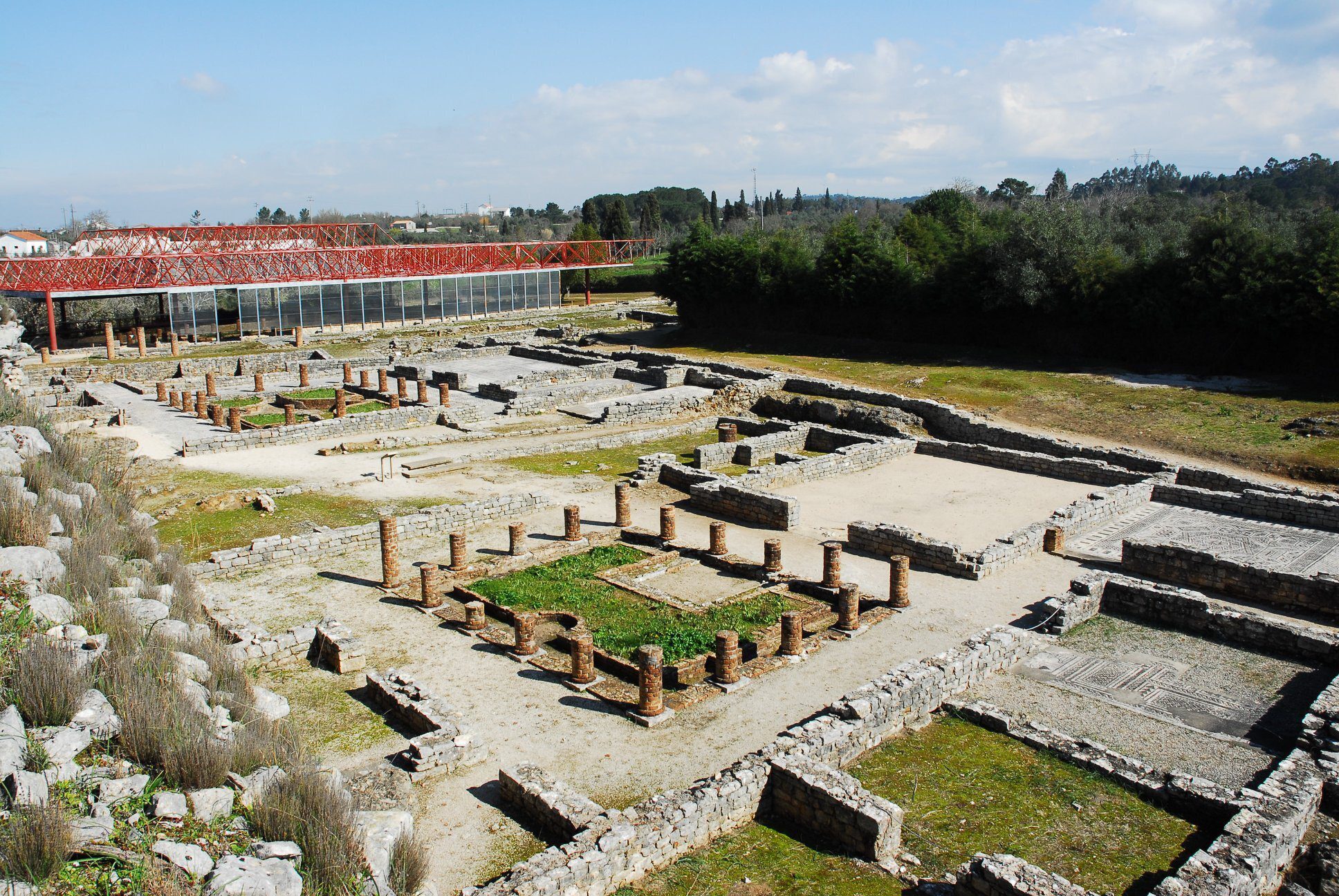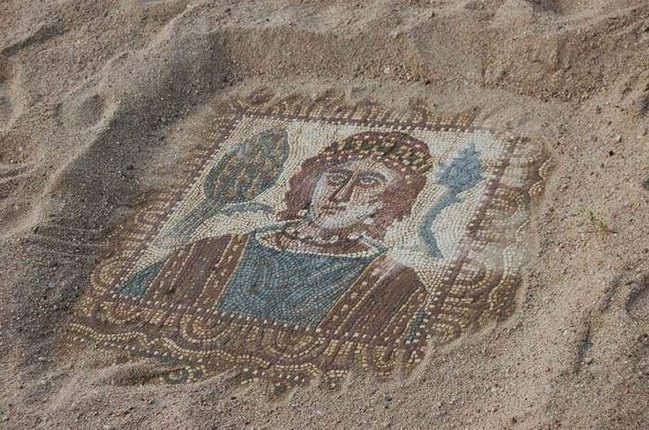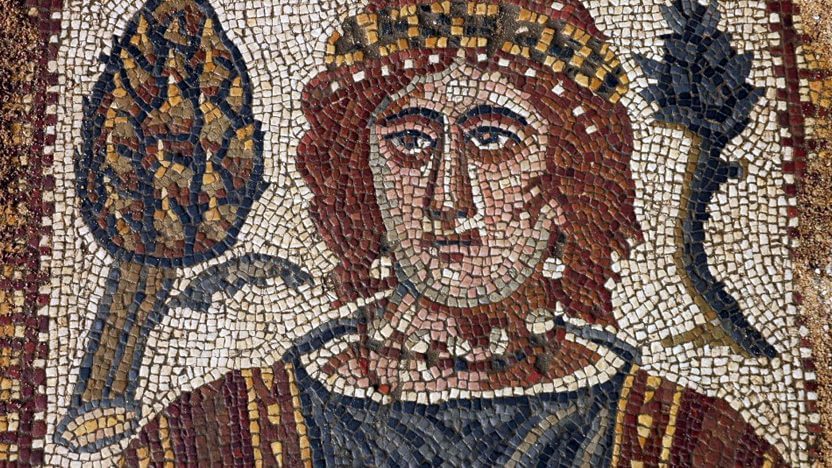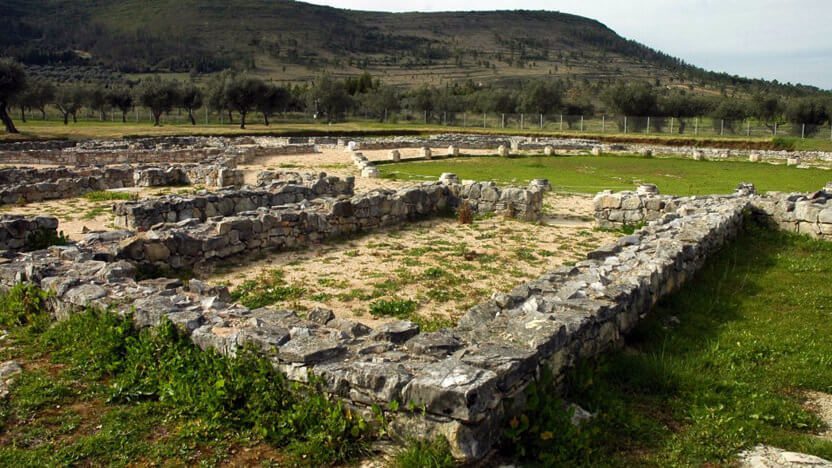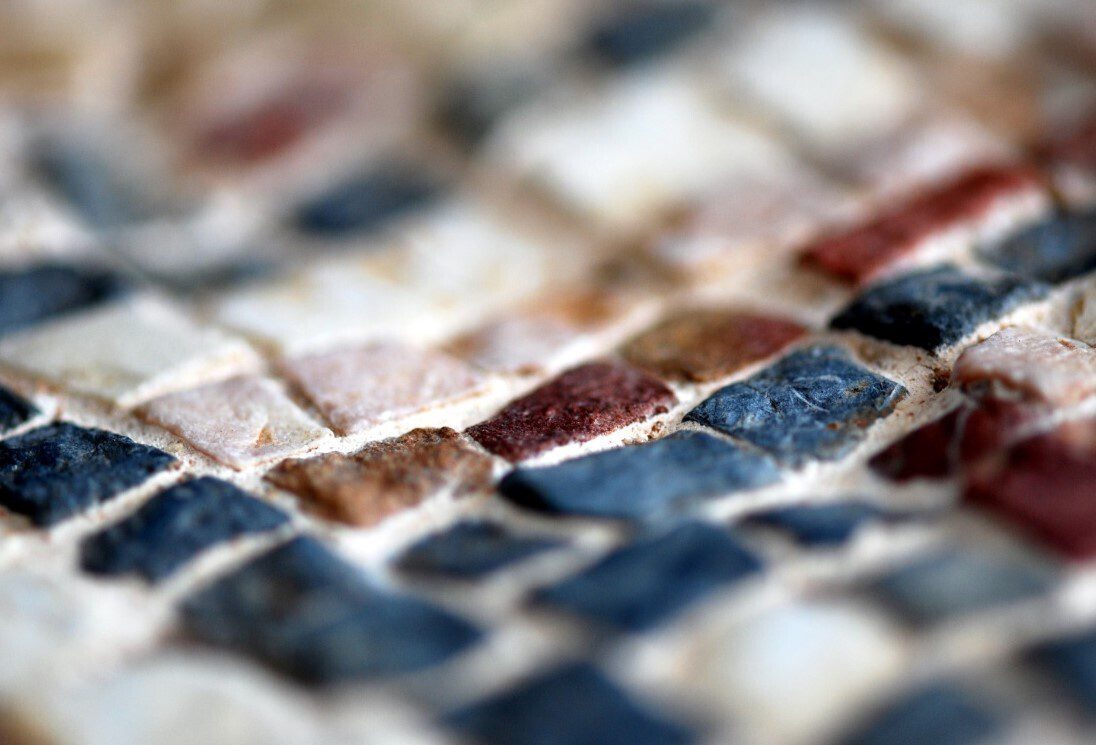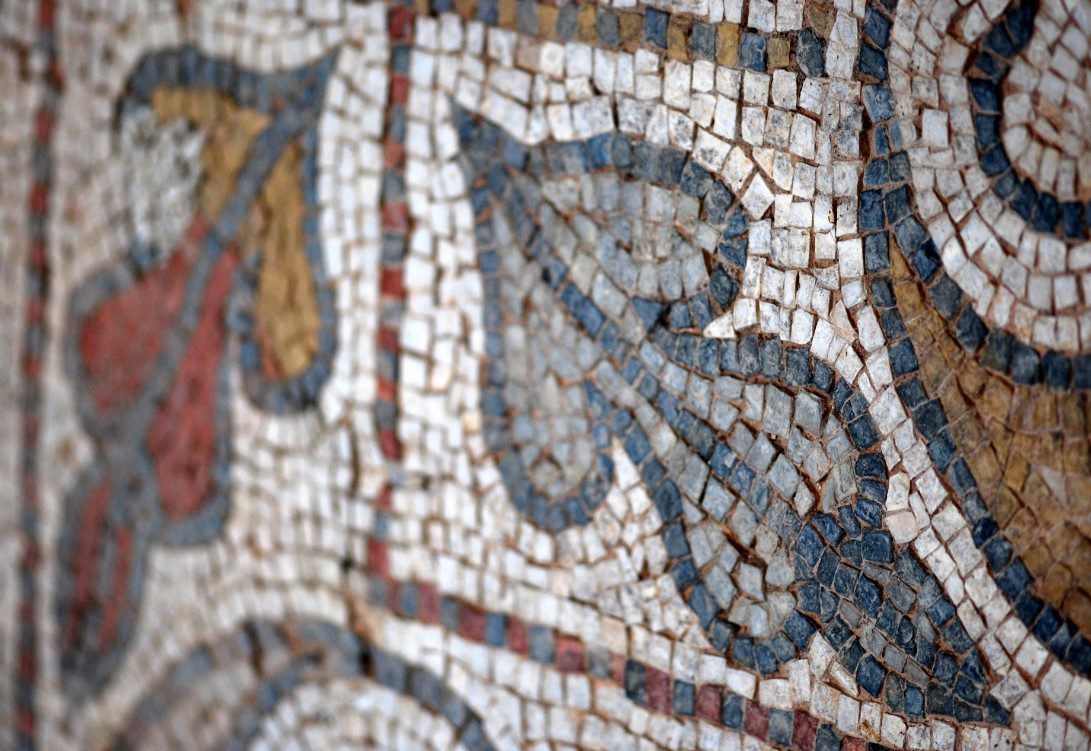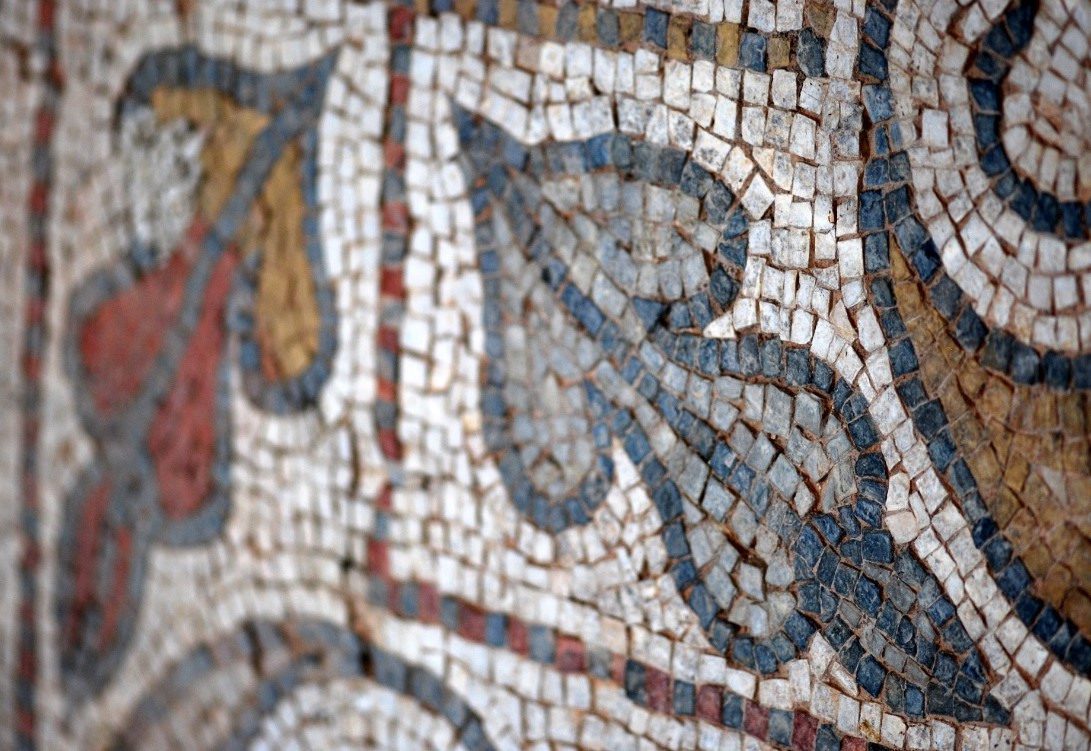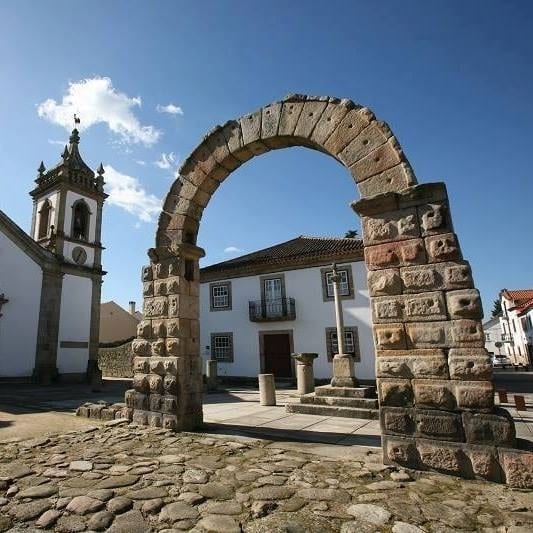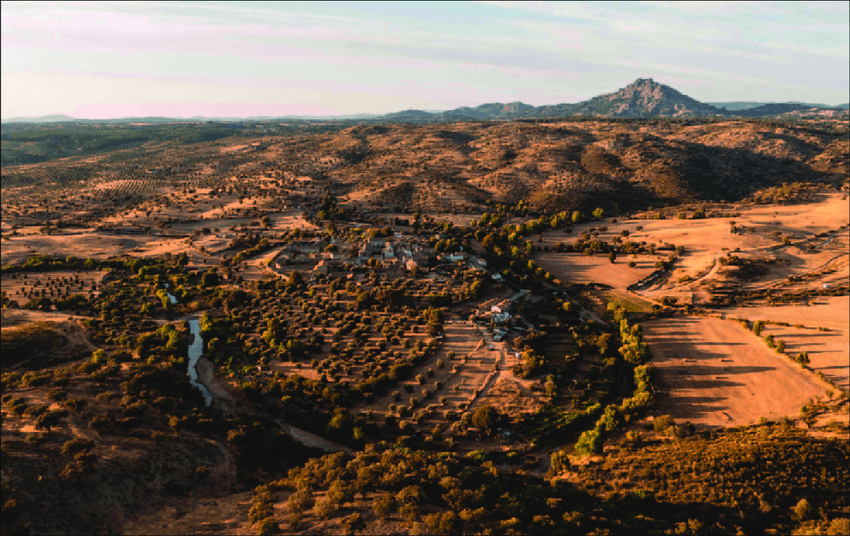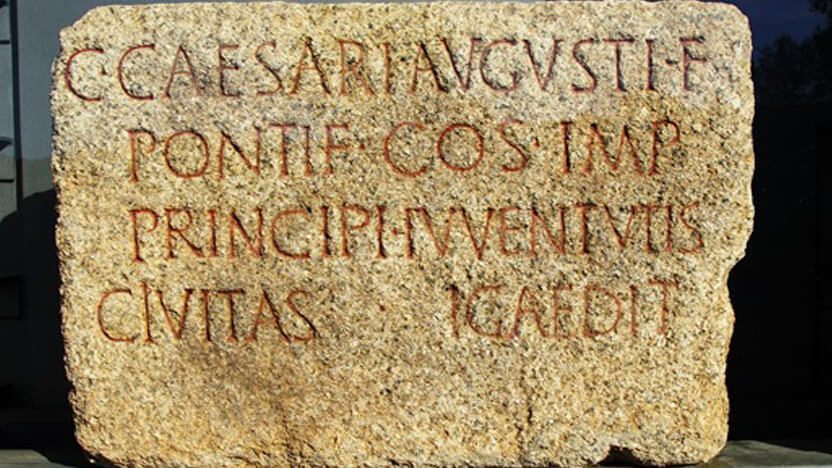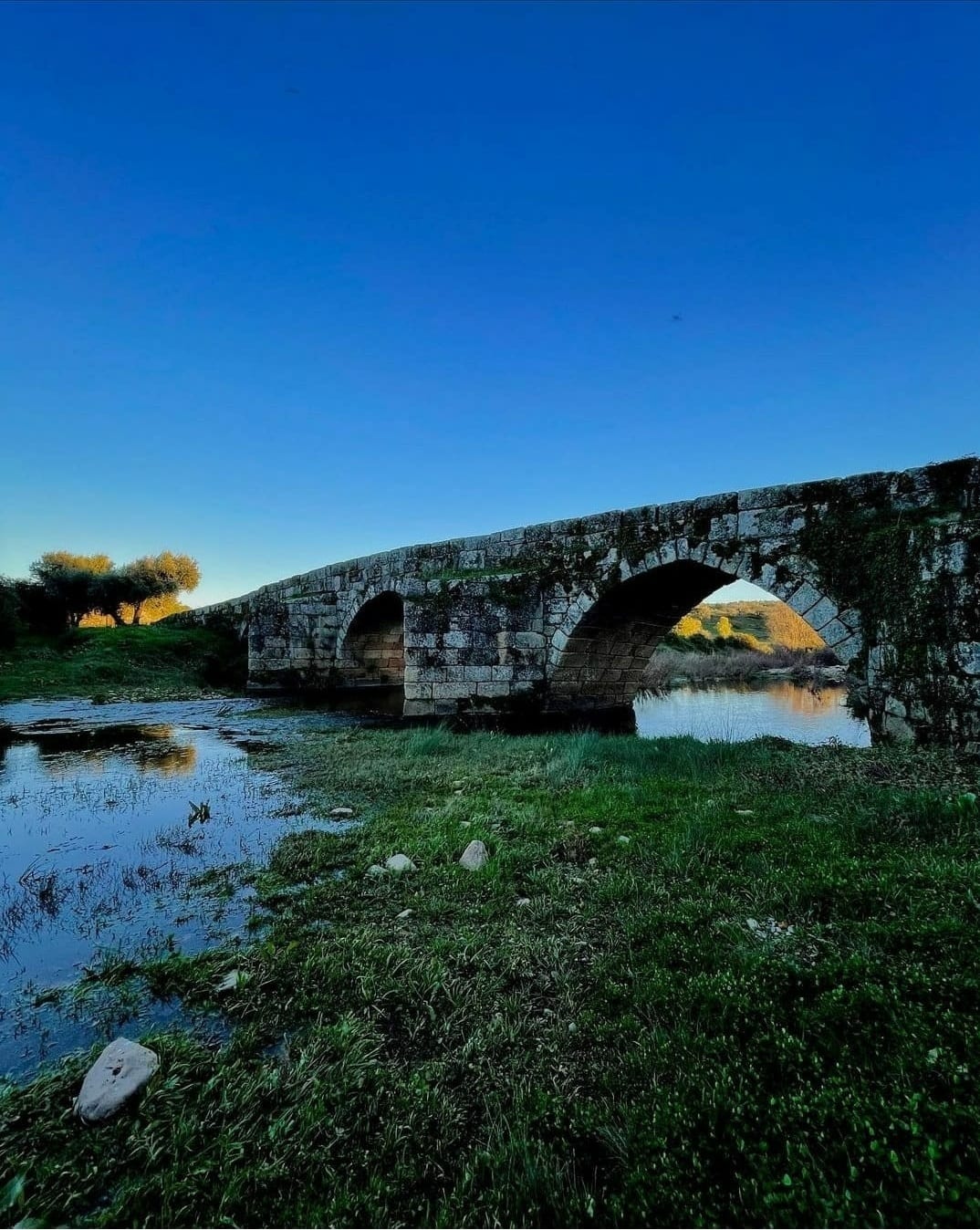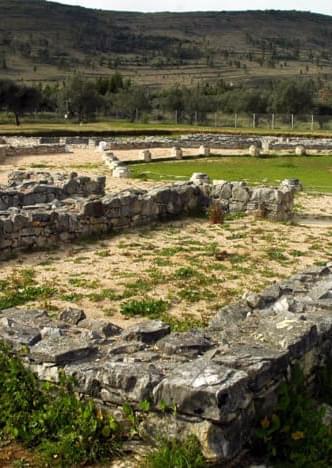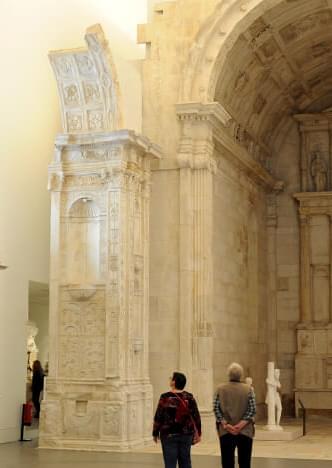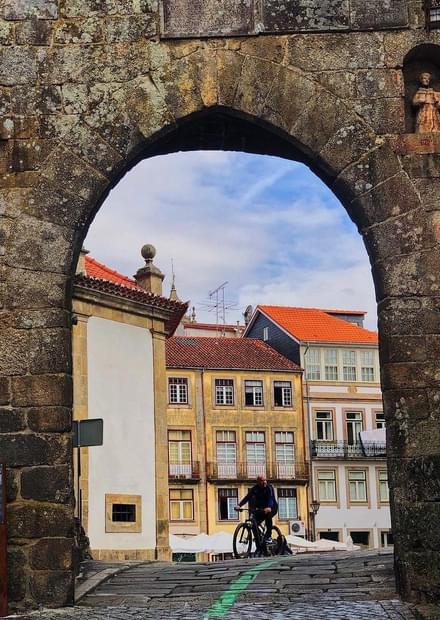The Aeminium Criptoportico
Dating back to the 1st century a.C., the Aeminium Criptoportico is regarded as the best-kept Roman building in Portugal.
The criptoportico was used as a platform for erecting the Roman Forum, a public square that was the religious, political and administrative centre of the city.
This Roman construction supported the courtyard and its surrounding buildings. The forum was the heart of the Roman city, located near the intersection of the two main roads – the cardo and the decumanus. These two streets used in Roman town planning had a similar orientation to the cardinal points – north-south and east-west.
Housed in the iconic Machado de Castro National Museum, the criptoportico is a true city beneath the city!
Roman Ruins of Conímbriga
Conímbriga is a true jewel of the Roman world. A place that we can not miss on our journey to Santiago. The living testimony of the fascinating power of History and the enduring influences on the national cultural legacy.
Inhabited since the Neolithic, Conímbriga was a castle when the Romans arrived here in 138 BC and took over the Oppidum. In the time of the Emperor Augustus, the Forum and the baths were the first buildings to be built. The water came from a place known today as Mãe-de-Água de Alcabideque and through an aqueduct which is still visible today. The city was walled, a basilica was built and also many places of worship. The head of Augustus and his feet in strap sandals, found near the temple are the proof of this.
When Conímbriga was given the statute of a township, probably between 70 and 80 AD, a new Forum was built. Its Portico and the new square populated with magnificent statues proved the power its inhabitants.
The streets and the houses with its fresh and perfumed patios, the floors paved with polychromatic mosaics and the smell coming from the baths, lead us to imagine a pompous, and almost “imperial” Conímbriga.
In Condeixa nature was generous. A walk through the Mata da Bufarda proves this. It is a wonderful world were the Oak, the scarlet oak and the cork tree mark the south. We are enchanted by the discovery of small bright coloured flowers: the lily, the thistle, the pennyroyal, the hyacinth, and the orchids.
Very near Conímbriga, the Canhão do Rio de Mouros, shows us thousands of years of work of the water over the limestone: at the bottom of its bed and on the margins, grottoes and caves, wild rose bushes, and lilies surprise us.
Roman Villa of Rabaçal
The road from Tomar to Conímbriga passed very near Rabaçal as proved by the discovery of a milestone from the time of Emperor Decio. It marked eight miles from Conímbriga.
Earlier, many centuries earlier the owner of the Roman Villae in Rabaçal could see these mountains when looking out of the tower, towards the rising sun. He was certainly well to do and from here he could see his properties.
We know that he was rich because of the dimensions of the palace: large halls, with a dome resting on columns. The walls were covered with marble stone. The floors had multicoloured mosaic better than the ones in Conímbriga.
The Roman Villa of Rabaçal is located 12 km south of Conímbriga, part of the territory of the old civitas, near the Roman road that linked Olisipo to Bracara Augusta, in the current county of Penela, district of Coimbra. The probable date of its construction is the middle of the 4th century AD, as confirmed by the findings, especially the abundant numismatic collection, and it would have been inhabited until the 5th century AD. Centuries after the Roman Villa was abandoned, it was partially reoccupied in the 15th and 16th centuries as a cemetery.
Santiago da Guarda
National Monument since 1978, the Monumental Complex of Santiago da Guarda is a beautiful example of Manueline architecture in the region. But it is also a living proof of History. A manor house of the Counts of Castelo Melhor with its iconic tower dating back to the 14th century, built upon an ancient Roman villa of the 4th and 5th centuries. The collection of multi-coloured mosaics is absolutely breath-taking!
Roman Ruins of Bobadela
The Roman ruins of Bobadela are one of the most important and best-preserved architectural complexes of historical and archaeological value from the Roman period in Portugal.
This complex of remains, located in the historic centre of the village of Bobadela, has been studied over time by the scientific community and admired by visitors, and was classified as a National Monument many years ago.
The Roman arch was designated the Monumental Arch of Bobadela, at the same time as it was classified as a Site of National Interest on 16 June 1910.
Later, in 1936, the classification as a National Monument was extended to the entire complex, changing the name to the Roman Ruins of Bobadela.
Among the diverse collection on display in the open air, amidst the urban fabric of the village, stand out the structural remains of the main square of the ancient Roman town, the forum, the majestic arch and the inscriptions dedicated to the Splendidissima Civitas, Julia Modesta and Neptune. There is also the enigmatic head of a Roman emperor.
Roman amphitheatre of Bobadela
The Roman amphitheatre at Bobadela was used from the end of the 1st century to the end of the 4th century as a venue for games and fights. It was built in an elliptical arena, oriented north-south, with a coarse gravel floor.
The podium wall surrounding the arena was marked by two entrances on its main axis and made up of rows of granite blocks topped with a two-part cornice.
The filling of the cavea (underground cells), around 15 m wide, took advantage of the rocky outcrop as much as possible, and the wooden benches were placed on top.
Splendidissima Civitas
Julia Modesta
In the old church of Bobadela, demolished in the 1740s and replaced by a new Baroque-style temple, there was an inscription. The text is now engraved on the lintel of the main door of the main church of Bobadela.
The epigraph, which is truncated and incomplete, may have been destroyed or used as building material for the new church.
From the translation of the text engraved in the stone, we can deduce that Julia Modesta (a possible priestess of high religious rank), as wife of the flamen (priest) of Lusitania, C. Cantius Modestinus, rebuilt the gates of the forum at her own expense.
This epigraph, which also recalls the splendid civitas, proves that there was a civitas capital in the plains of Bobadela, which shared with Viseum (Viseu) the vast plateau of the central Beira, which was bounded by the Serra da Estrela, Montemuro and Caramulo mountains.
Neptune
This inscription, engraved in monumental letters, is embedded in the base of the bell tower of Bobadela's main church. As for its translation, it could be linked to any temple dedicated to the cult of Neptune, or belong to a monument linked to water - nymphaeum Neptunale.
Torre de Centum Cellas
This is a Roman building of unknown function, probably part of a Roman villa, rectangular in plan, single volume, 3 storeys high. Located in Colmeal da Torre, a rural location.
Considered one of Portugal's most enigmatic monuments, the Centum Cellas Tower is a unique space on the Iberian Peninsula, with an unusual monumentality.
It has a parallelepiped shape, well-cut stonework and a notable height. It is possible that in medieval times the Centum Cellas tower played a role in consolidating and defending the eastern border of the Kingdom of Portugal with that of León. It received a charter from the Portuguese monarch Sancho I in 1188, in which it is referred to as Centuncelli.
Villa da Fórnea
Located between Belmonte and Caria, the site was discovered during the construction of the A23 motorway in 1999.
Excavations revealed a number of Roman artifacts from what would have been a rustic estate, revealing a certain wealth: several rooms, some still well-defined, such as the olive press, grain processing, iron foundry and animal stables.
The whole complex was connected by a system of gutters that allowed water to be supplied and circulated.
A number of baths were also discovered, with traditional pools for bathing at different temperatures - frigidarium, tepidarium, caldarium, one of which had walls over 1.50 metres high, with traces of staircases and covered in opus signinum.
Traces of a hypocaust and apoditerium were also discovered, which would complete the baths. The materials unearthed seem to suggest that this site was initially occupied in the late 2nd/early 3rd century and intentionally abandoned in the 4th century.
Idanha-a-Velha
It was the capital of a vast administrative district that also included land in Spain. It is not known whether its occupation was protohistoric or whether it was a Roman city founded from scratch at the end of the 1st century BC.
The inscription from 16 BC, which relates the gift of a sundial to the Igaeditani by a settler from Emerita, reveals that Igaedis was the capital of the civitas in the early days of the Lusitanian province.
Igaedis, the probable name of the Roman city, was founded at the end of the 1st century BC on the banks of the river Ponsul.
Situated on the important road linking Mérida, capital of the province of Lusitania, to Braga and crossing the Tagus at the Alcantara bridge and the Erges at the Segura bridge, it became the main Roman city between the Tagus and Douro rivers.
The city's importance is recognised by its buildings, such as the city walls and the forum temple, as well as its remarkable collection of inscriptions. Other public buildings were probably built, such as the public baths, located to the south of the city, facing the river, and whose excavations could enable them to be opened to visitors.
A probable amphitheatre, where the famous gladiator fights took place, has yet to be discovered. In the first half of the 20th century, it was conquered by the Suevi, who chose it as the seat of a bishopric and renamed it Égitânie.
In 585, it became part of the Visigoth kingdom, and several Visigoth kings minted gold coins here.
The southern baptistery stands out from this Sueve-Wisigothic period, while the remains of the city's earliest Christian temples, inside the city walls, can be found beneath the present-day church of Santa Maria. This church was built from another church dating back to the late 9th or early 10th century, which combines Christian and Islamic influences, the city having been taken by the Muslims in the 8th century, when it was known as Laydanya.
It was an important Templar centre, having been given to the Order of the Temple in 1165 by D. Afonso Henriques, the first King of Portugal.
At the end of the 19th century, it ceased to be the seat of a bishopric and lost its importance.
